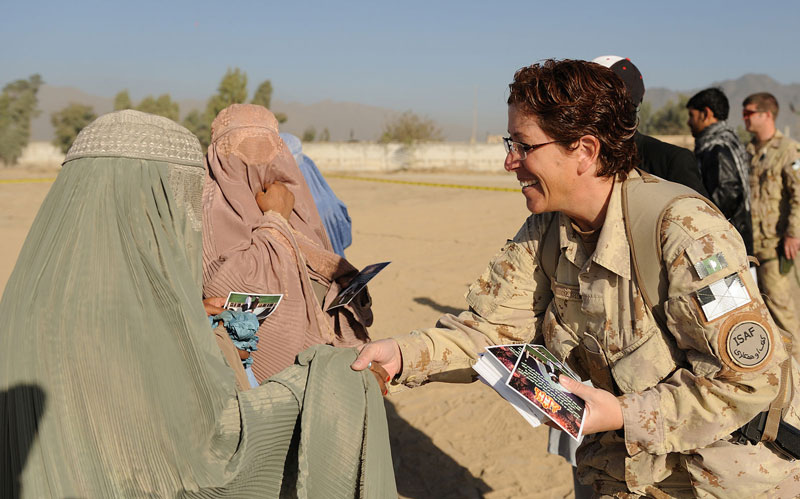
Members of the Canadian Armed Forces may now choose to be addressed by female versions of French ranks that best represent their gender identity.
“The modernization of military ranks ensures that CAF members have options, and can be addressed in a way that reflects who they are,” said Major-General Lise Bourgon, acting chief of military personnel.
All CAF members, including those who identify as non-binary, may choose to feminize their rank and specialty in French—la sergente,
la majore, la générale, l’aviatrice (aviator), la matelot (sailor).
It is the latest step in furthering inclusivity and gender diversity in the CAF.
By 2026, the CAF wants a quarter of its forces to be female. In 2020, nearly 16 per cent of personel were women. The CAF is also falling short of its goal of 11.8 per cent for racialized communities.
“I’ve felt through my entire career that I didn’t always fit in,” Bourgon told The Canadian Press. “I had to use a masculine term to represent myself. That’s not who I am, not the gender that I’m comfortable with.” Bourgon has been in the military for 34 years.
“Now, I can finally call myself la majore-générale,” she said.
In 2020, the Royal Canadian Navy adopted a more inclusive rank designation in English, ditching the term seaman and substituting sailor. Prior to the move, the navy surveyed more than 18,000 military and civilian personnel and veterans; more than 75 per cent were in favour of adopting gender-neutral terms.
All CAF members may choose to feminize their rank and specialty in French.
Vice-Admiral Art McDonald, navy commander at the time, said the move was not just about recruiting, but about moving with the times.
In November 2021, Bourgon announced a number of changes to improve diversity and inclusivity.
“I am fully committed to creating a workplace that is welcoming, inclusive, safe and respectful for every member of our team,” she said.
At the top of the list was an update to CAF dress regulations, “focused on removing the barriers to members’ choice of clothing and other aspects of appearance…allowing members the freedom to choose the uniform that makes them the most comfortable.”
Other changes include a Women’s Health Framework, as part of the CAF health and wellness strategy, and a new compassionate leave policy covering loss of a child, family violence, family-related situations and religious and spiritual accommodation.
Inclusivity is also being addressed in the employment equity plan, in training processes and in changes aimed at preventing bias in the promotion and selection process.
Professional standards have been updated in the new manual, The CAF Ethos: Trusted to Serve, which outlines core expectations and values necessary for leadership, focusing on character.
“In the past it was much more of a competence-based focus,” General Wayne Eyre, chief of the defence staff, said in a Legion Magazine interview. “I firmly believe if you have good character leading, competence will follow.”
Advertisement












